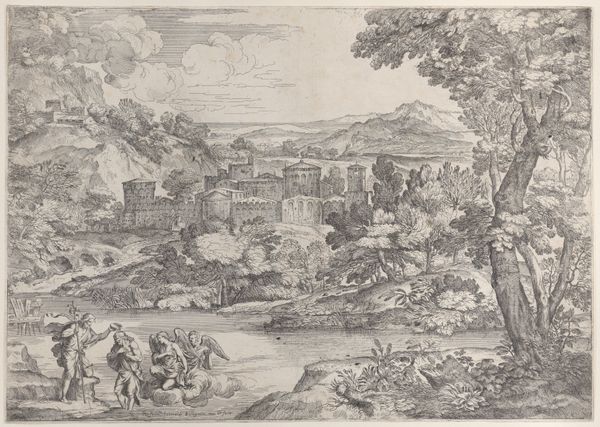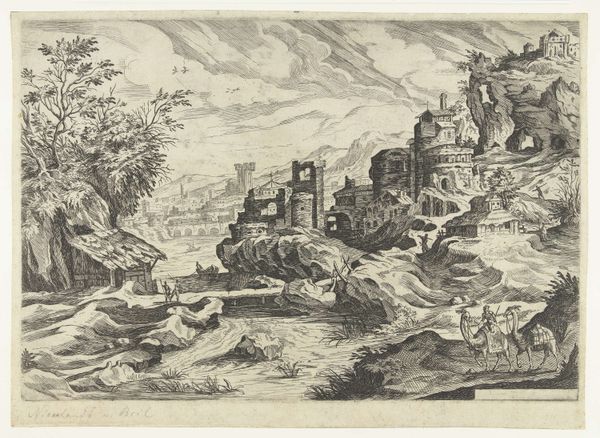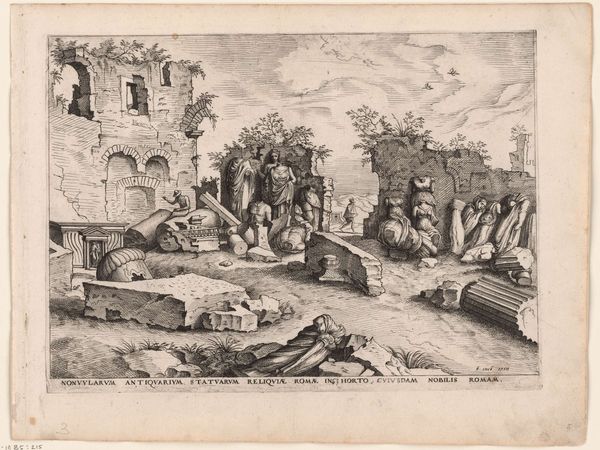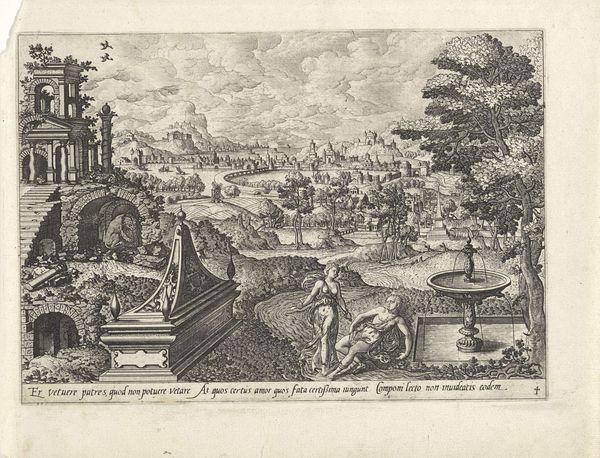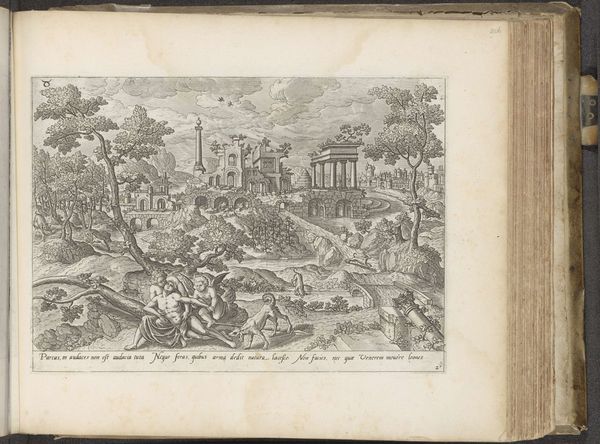
etching, engraving
#
etching
#
landscape
#
mannerism
#
figuration
#
form
#
11_renaissance
#
line
#
history-painting
#
engraving
#
miniature
Dimensions: height 192 mm, width 232 mm
Copyright: Rijks Museum: Open Domain
Editor: This engraving, "Venus Beweent Adonis" from 1540-1630, credited to Johannes or Lucas van Doetechum, portrays a scene filled with classical ruins. I'm immediately struck by how incredibly detailed the line work is; it almost feels miniature in its precision, despite the overall composition. How do you interpret this landscape? Curator: Note how the meticulous detailing is evenly distributed. There is no clear focal point which flattens the pictorial space, pushing forward what would conventionally be seen as recession. Even in a mournful scene, line remains evenly descriptive; texture, mass and form do not undergo the subjective impressions that came to dominate painting, for example, centuries later. What effect does that distribution of detail have on your reading? Editor: I see what you mean! It definitely neutralizes any one area; it’s as though the human drama in the foreground is equally important to the architectural forms, like the ruins, or the natural forms, such as trees. So everything carries the same visual weight because of this uniform level of detail? Curator: Precisely. Furthermore, consider how the figures are arranged. Venus, Adonis, and Cupid exist not so much in a believable spatial relationship, but as part of a decorative frieze. What emotions, if any, does that create for you? Editor: Hmm, distancing, maybe? By reducing emotion, that formal arrangement seems to push me to focus more on the elements within the composition rather than an emotional story. Curator: Indeed. It seems we both depart having noted how a formal strategy, in this case evenly distributed line work, shifts our experience and expectations.
Comments
No comments
Be the first to comment and join the conversation on the ultimate creative platform.
